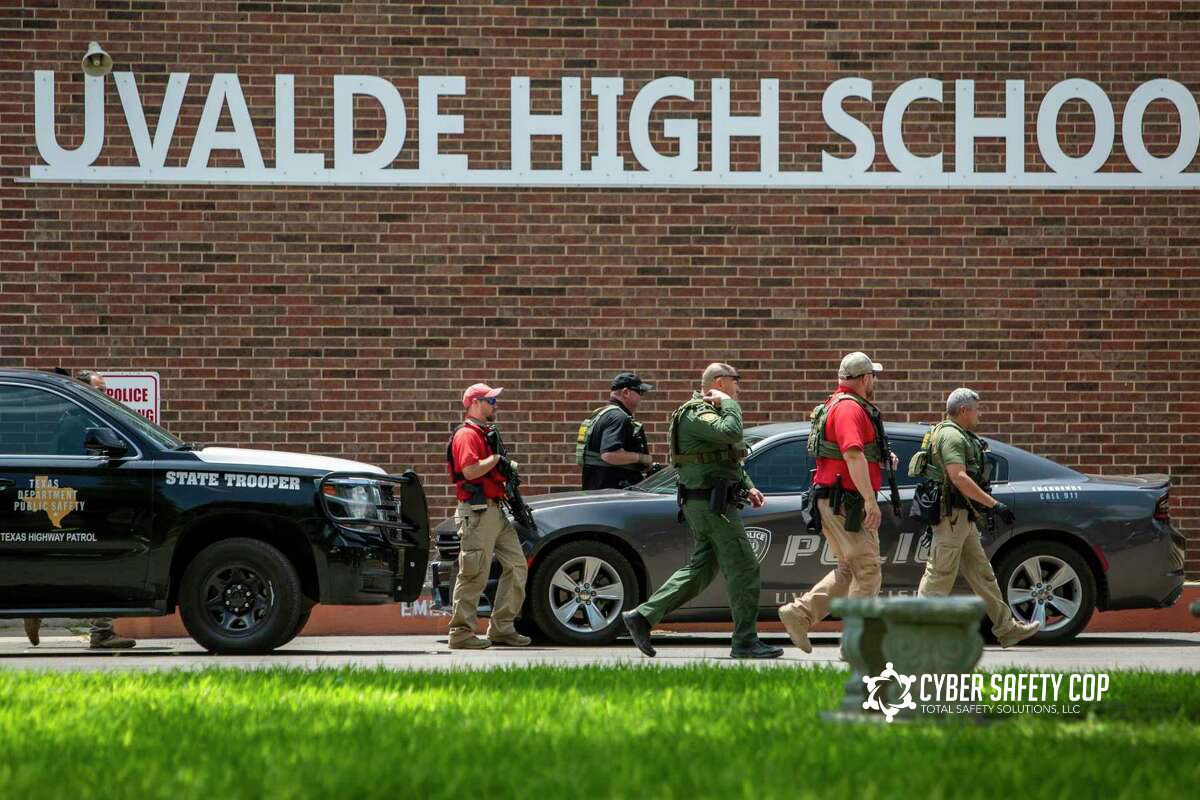School shootings have risen more than 50% in the last year. What can we learn from these events, and more importantly, how can we stop them before lives are lost?
In May of 2021, I published an article, “Are We Facing a Tsunami of Mass Shootings?” I am afraid my prediction has come true. What can we learn from these events, and more importantly, how can we stop them before lives are lost?

The number of active shooter incidents in the U.S. rose by 52.5% from 2020 to 2021, and over four years, from 2017 to 2021, there was a 96.8% increase, the FBI said in a report published Monday.
The FBI defines an active shooter as “one or more individuals actively engaged in killing or attempting to kill people in a populated area.” The definition implies using a firearm, and the “active” descriptor refers to the “ongoing nature of an incident, and thus the potential for the response to affect the outcome.”
The bureau noted that the data shows “an upward trend over those four years.” In 2021, the FBI designated 61 shootings in 30 states as “active shooter incidents,” resulting in 103 people killed and 140 wounded, excluding the gunmen. Last year saw the highest number of deaths due to active shootings – 103 total – since 2017, a whopping 171% increase from 2020.
In the last three weeks, we have seen several tragic active shootings. On May 14, 2022, a mass shooting occurred in Buffalo, New York, United States, at a Tops Friendly Markets store, a supermarket in the East Side neighborhood. Ten people were killed, and three other people were injured. The shooter live-streamed the attack on Twitch. On May 24, 2022, 18-year-old Salvador Ramos opened fire at Robb Elementary School in Uvalde, Texas, United States, killing 19 children and two teachers and wounding about 16 others. Earlier that day, he shot and wounded his 66-year-old grandmother.
We sit horrified watching these events reported on the news. Every parent is thinking about their child’s safety when they send them off to school. There is a solution to stop these school shootings from occurring.
The Solution
1. Know the signs a student is on a path to violence and give students a way to tell someone safely.
There are several observable signs a person is on a path to violence, but the most obvious one is leakage. Leakage is defined as “the communication to a third party with an intent to harm a target.” Students might intentionally confide in a peer or communicate their violent plans through their journals or social media pages. In their study of school violence, the U.S. Secret Service and U.S. Department of Education noted that in 81% of the 37 violent incidents reviewed between 1974 and 2000, at least one individual knew the attacker was considering an act of violence before it transpired. These individuals were most often (93%) friends, classmates, or siblings; only rarely (17%) did the attackers threaten their intended targets directly. In this one pathway warning behavior, we have an amazing opportunity to stop an individual’s progression to violence. So, why aren’t people who are witnesses to leakage telling anyone? It can stem from people’s personal fear of “getting involved,” or perhaps they are unsure what to do or who to tell. Every school and police agency should utilize a “see something, say something” campaign. Several schools I worked with had a confidential “Text-a-Tip” number students could use to alert school and police about concerning issues.
2. Create Behavioral Threat Assessment Teams and train your school staff.
Most school districts and police departments do not have a threat assessment procedure or have people trained to assess a person of concern. If they do, they are usually not well trained or use an inferior threat assessment program.
Every teacher and staff member at a school should be trained to identify pathway warning behaviors and how to report them. School police officers, school administrators, and counselors must be prepared to perform a behavioral threat assessment. The threat doesn’t end at the assessment. They also need to be trained in managing a person of concern. Expelling a student from your school doesn’t put a magical forcefield around your campus. Marjory Stoneman Douglas High School learned this. After removing Nikolas Cruz the prior year, he returned and murdered 17 people.
After reading this article, sadly, you probably know more about behavioral threat assessments and identifying a potential school shooter than 90% of school officials and law enforcement. After working with schools all over the country, I have learned something significant; if you want something done and you want change, it often comes from parents demanding it.
Parents should be asking their school district some difficult questions. Ask them, do you have a specially trained behavioral threat assessment team? When you identify a person of concern, what do you do? If the answer is, we call the police. Then the next question is, are the police trained to assess a person of concern? What happens after the student gets released from juvenile hall or the hospital? Do they have a plan to manage that student? Is every teacher trained to identify pathway warning behaviors at your child’s school? Do they have a mandatory reporting procedure? If they have been trained, ask, are they retrained every year? If they’re not, they should be.
Share this article with your friends on social media. This needs to be a national conversation.
Behavioral Threat Assessment Training Opportunities
Behavioral Threat Assessment and Management
June 3 @ 8:00 am – 5:00 pm PDT
Irvine City Hall Council Chambers
1 Civic Center Plaza
Irvine, CA 92606
Register for this course
Bring the training to your school or organization
Contact us and find out how you can bring this lifesaving training to your organization. We provide a complete threat assessment program.
References:
‘Active shooter’ incidents jumped more than 50% last year, FBI report finds. https://www.cnn.com/2022/05/24/us/active-shooter-incidents-fbi/index.html
Active Shooter Incidents in the United States in 2021. https://www.fbi.gov/file-repository/active-shooter-incidents-in-the-us-2021-052422.pdf/view
Image credit: https://www.houstonchronicle.com/opinion/editorials/article/abbott-uvalde-shooting-reaction-17196685.php
*There are affiliate links throughout this post because we’ve tested and trust a small list of parental control solutions. Our work saves you time! If you decide that you agree with us, then we may earn a small commission, which does nothing to your price. Thank you!





